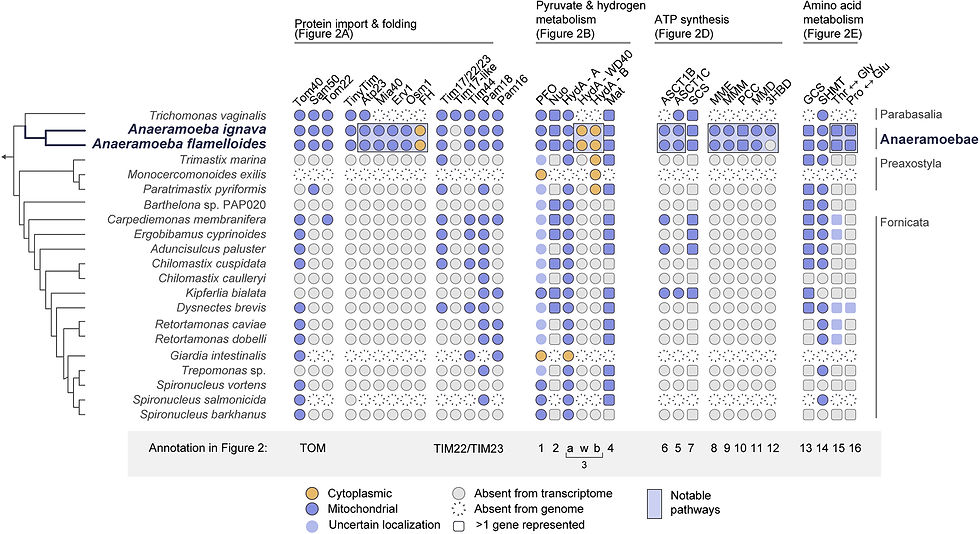Anaeramoebae Shed Light on the Transition from Anaerobic Mitochondria to Hydrogenosomes
- lukasvfnovak
- Oct 27, 2021
- 1 min read
Guest post by Courtney W. Stairs (@cstairs)
Let me introduce you to the Anaeramoebae. This was a fun collaboration with Petr Táborský, Eric D. Salomaki, Martin Kolisko, Tomáš Pánek, Laura Eme, Miluše Hradilová, Čestmír Vlček, Jon Jerlström-Hultqvist, Andrew J. Roger and Ivan Čepička. Out now in Current Biology!
Anaermoebae were discovered a couple years ago by Petr, Tomáš and Ivan. These protists were isolated from anaerobic marine environments. At the time, it was difficult to place these cute critters on the tree of life. See: Anaeramoebidae fam. nov., a Novel Lineage of Anaerobic Amoebae and Amoeboflagellates of Uncertain Phylogenetic Position.

We sequenced the transcriptomes of two species of Anaeramoeba allowing us to perform phylogenomics. To our surprise, we found this anaerobic amoeba is actually a metamonad! Metamonads include pathogens like Giardia and Trichomonas that often have weird anaerobic mitochondria. These species represent a new principle (phylum-level) lineage within Metamonada emerging as the free-living sister group to the (predominantly) parasitic parabaslids (Trichomonas vaginalis).

Given their anaerobic lifestyle, we could not resist reconstructing their mitochondrial metabolism. We found the anaeramoebids possess anaerobically-functioning mitochondrion-related organelles similar to other metamonads (predicted to be hydrogenosomes).

They are predicted to possess a number of mitochondrial features previously thought to be absent in many metamonads such as positively-charged N-terminal presequences, propionate production and intermembrane space protein maturation (disulfide relay system). These MROs represent important “missing links” between typical aerobic mitochondria of other eukaryote supergroups and anaerobic MROs of the Metamonada.
Thanks for listening :)
Paper: Anaeramoebae are a divergent lineage of eukaryotes that shed light on the transition from anaerobic mitochondria to hydrogenosomes https://www.cell.com/current-biology/fulltext/S0960-9822(21)01364-6









Comments